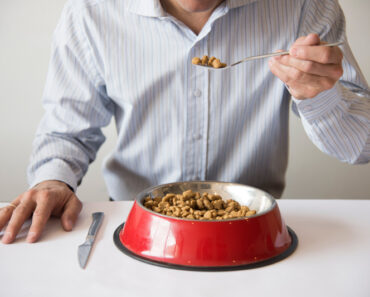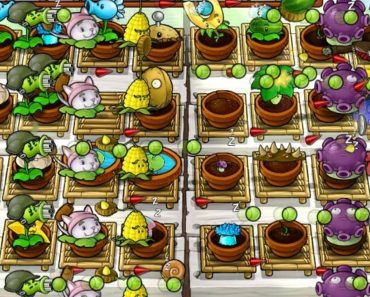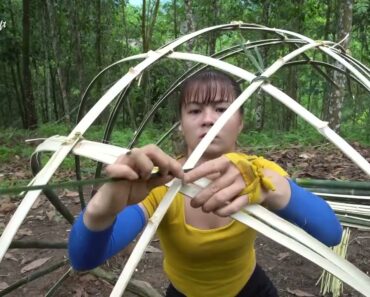For most people, fall means that that the holiday season is here. People are thinking about partying and having a good time, from dressing up on Halloween to getting drunk on New Year’s Eve. The good food we eat on Thanksgiving and Christmas goes well with the presents we love to give and receive.
But that’s not all that fall means. For those of us who are preppers, fall means getting ready to survive the winter. Our ancestors were brought in the harvest at this time, looking to see if they would have enough to see themselves through till the following year. A bad year could be disastrous, as chances were pretty high that they would starve, as they couldn’t get much food from nature in the wintertime.
That brings us to another important thing about fall, starting the following year’s gardening. No, I’m not talking about getting seed in the ground; I’m talking about planning and preparing for the following year’s planting. If we don’t start that in the fall, then when spring rolls around, we won’t be ready. Trust me on this one; I’ve had it happen way too many times.
As we sit here in the fall, it’s easy to think that you’ve got a lot of time before you need to think about spring planting; but that’s not true. Spring planting will be right around the corner by the time we make it through the holiday season. For those who live in hotter climates, as I do, spring planting can start as early as February, so that’s a tight corner.
If we look back in time, our ancestors on their homesteads made good use of this time. Fall and winter may have seemed like a time to sit back and relax once the harvest was in, but that just wasn’t so. While we didn’t see a lot of activity in the fields, they just moved their work indoors, making use of the winter months to get many maintenance tasks done that they wouldn’t have time for during the growing season. But before that could even happen, they would be preparing those fields for planting the following spring.
Wrap Up This Year
Obviously, you can’t start working on next year’s gardening until this year is done. That means bringing in the harvest and doing something with it. This can be the busiest period for a gardener, just as it is for farmers worldwide.
Preserving food is rewarding, but it’s a lot of work too. Still, that product should be kept while it is as fresh as possible. The longer you wait to maintain it, the lower quality you can expect from your canned and dried foods. This means a few days to a week of frantic activity, after which we’re all ready to collapse.
Canning always goes better if you have a plan. What things are you going to can, and in which order will you work on them? It makes a whole lot more sense to can things quickly, which won’t last long. The other things can wait a few days. But it also makes sense to make use of every minute, taking what would otherwise be dead time and using it for preparatory tasks. In other words, using the time when the jars are in the pot to cut up some more food.
The same goes for any other form of food preservation. Before I moved, I got a great harvest of pomegranates, more than a wheelbarrow full a few years back. I was busy digging the seeds out of those pomegranates for a couple of days and freezing them. Then the pomegranates went bad. It seems like it was only about three days, but I had to haul what was left off to the compost pile after those three days.
But Don’t Wrap it Up too Much
While getting your garden wrapped up for the year is necessary, some things people do aren’t. I’m specifically talking about roto-tilling the park or turning the soil by some other means. Once upon a time, that was the prevailing wisdom in both gardening and farming. But times have changed, and we’ve learned more about the plants we work with.
We’ve learned that breaking up the soil also means breaking up beneficial fungi that live in the ground. These fungi form symbiotic relationships with our plants, attaching themselves to the roots and acting as extensions of those roots. They feed off the plants they are attached to while at the same time bringing water and nutrients that the plants need.
Breaking up the soil is only useful when the ground becomes compacted. That’s one of the reasons to use raised bed planting. It allows you to confine your walking to areas where no planting is happening so that your body weight doesn’t compact the soil. No compaction, no need for tilling.
Take Some Time for Planning
Once the canning and dehydrating frenzy are over, take some time to review your gardening efforts for this year and plan for the following year. The best gardeners take notes of their gardening efforts, writing down what they’ve done and when they did it in great detail. That helps them decide what is working the best for them to improve their efforts every year.
Based upon those notes, what are you going to do differently next year? What are you going to do the same? Is there something that didn’t work out the way you expected? If so, can you figure out why it didn’t work out? Make good use of the internet, searching out the problems you’ve had and looking for solutions. Then figure out which of those potential solutions you’re going to work into the following year’s gardening efforts.
This is also the time to plan any maintenance work your garden needs. Planting beds, unfortunately, don’t last forever, so you should be checking them every year. If they don’t look like they’re going to make it through another planting season, now’s the time to rebuild them.
I like to use this time for underground projects as well. I depend on underground watering a lot, whether underground soaker hoses or bringing water underground to beds where I’m using drip irrigation. I can’t do that during the regular planting season, so I try to do it between harvest time and the first snow. If I wait too long, the ground freezes, and it has to wait until next year, so timing is somewhat critical for those additions.
Place Your Seed Orders
With the planning done, it’s an excellent time to place your seed orders before everyone else does. Seed houses can run out of seed, just like nurseries can run out of trees. While you won’t need that seed for several months, getting your order in early helps ensure that you will have it when you need it. Put a note on order, letting them know you’re willing to wait and that you’re just getting ready for the following year.
Is It Time for Expansion?
Adding in subterranean watering isn’t the only thing that this time is good for; it’s also the ideal time for expansion. Anyone who has built a planting bed knows that it doesn’t just happen overnight. It takes a lot of time and sweat to clear the ground, make the bed, and fill it with good planting soil. Not only that, but as we all know, that soil needs time to get ready so that the worms and bacteria can break down the compost into nutritious soil.
I like building beds in the fall, even before harvest time if I can. That leaves even more time for the worms to do their thing before I try to plant in those beds in the springtime.
But again, it’s not so much about the beds themselves as it is about the soil. I take care when I’m mixing up a fresh batch of garden soil because I know that I’ll never get a chance to do it again for that particular garden bed. So I don’t want to put myself in a situation where I’m rushed and unable to do a good job. By starting in the fall, I’ve got all winter if things don’t go right.
What About Trees?
Another area of expansion to consider is planting more fruit trees. The best time to plant these trees is while they are dormant. At the same time, you need the ground to be soft enough to dig in, so it can’t be frozen. That means the best time to plant them is early in the spring, basically as soon as the ground thaws. The same can be said for many types of berries.
This means that fall is the time to get your tree and bush orders into the nursery before they place their orders for spring. Most nurseries will order more than what they have orders for, but I’ve seen many a time when they ran out of stock. The only way to be sure that you’ll get what you want is to place an order.
Some people prefer planting trees in the fall, as the cooler weather is easier on the new trees than getting them to root in the summertime. This depends mainly on the climate where you live, though. If you live in the south, where you are likely to have a mild winter, by all means, take advantage of it for fall tree planting. But if you live in the spring, the freezes might be too much for your young trees.
Even if you don’t plant, you can prepare to plant. You’re going to have an idea of where you want to plant those trees, or you wouldn’t be seriously considering adding them. So if you know that, you can take the time to fortify the soil, adding compost and fertilizer to it to be ready to receive your new tree saplings in the spring.
Get Your “Fields” Ready
The other big thing to do in the fall is to make sure that you get your garden beds ready for the spring. That has to start with getting rid of the no longer needed plants because you have already harvested everything from them. While farmers turn those plants under, allowing them to become compost, you and I don’t have the extra space in our garden beds to do that. Allowing those plants to remain or even turning them under means that there’s a lot of space in our garden beds where the roots of the new plants can’t grow.
We’re better off pulling those plants out by the roots and moving them over to our compost bin for recycling. Then we need to level the soil back out and top it off with a good layer of compost.
Some people top their fall compost with either straw or mulch for the winter. This helps keep the heat in the garden, which allows the bacteria to thrive as they break down that compost. Just be sure to remove the layer of straw or compost in the spring before planting.
I like to add worms to my garden beds whenever I top them off with fresh compost. I also add them to my next compost bin at the same time. You see, I live in a hot climate, which is hard on worms. Since I know they don’t thrive well in my environment, I add more when the weather is cooler. That helps the composting, and when the worms die from the following year’s heat, their bodies help nourish the soil.
One Last Word
Whatever you do, don’t let the time get away from you. It’s surprising how quickly the winter can rush by, putting us into planting season before we know it. If you allow yourself to think you have plenty of time, you’ll wake up one day to find that it’s too late. Once again, I’m speaking from experience, so trust me on this. Try to learn from my mistakes so that you can go on to make new and different ones, rather than repeating the same ones I’ve done.






![Flower's Garden SECRET!! | MyCraft Family Minecraft Survival [Ep.3] Flower's Garden SECRET!! | MyCraft Family Minecraft Survival [Ep.3]](https://survivalcove.com/wp-content/uploads/2022/02/1645064494_maxresdefault-370x297.jpg)





















